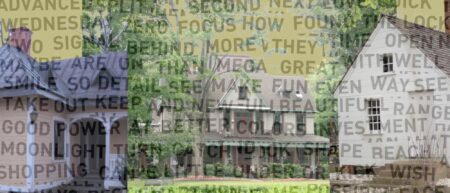At the funeral of one of Sufiya Abdur-Rahman’s family friends, all of the Muslims are asked to step forward to pray salat al-janazah. “Suddenly, I didn’t know what to do. Am I Muslim or not?” Sufiya asks herself. When she sees that second-generation African American Muslims like her are stepping forward, she assures herself, “Of course, I’m Muslim.” But then, she doesn’t know the words to the prayer. “I was ashamed of my ignorance,” she tells us. Over the course of her book Heir to the Crescent Moon, we feel those jumps back and forth in Sufiya’s life, from being a child and wanting to be a Muslim “before I even understood what Muslim was,” to asking herself, “So if Islam could not protect us, what was the point of our parents converting, making their own and our lives more complicated with Islam’s many rules and edicts?” To fully explore this movement back and forth, Sufiya has to go beyond her own life and relationship to Islam, and blend the story of her parents, their conversions to Islam, their divorce, and her family’s history.
Sufiya began writing what would become Heir to the Crescent Moon in the Masters of Fine Arts Program at Goucher College and later won the Iowa Prize for Literary Nonfiction. At first, she thought she was going to write a reported book about the Black American Muslim experience in the late 20th century. She was, after all, a journalist who didn’t feel comfortable writing in the first person. She also didn’t think that her family’s story was interesting or significant. But as she began interviewing other Black Americans who had converted like her parents or who had been born Muslims like her, she realized that by telling her and her family’s story, she could write a book about African American Muslims and explore the ways in which her family both embodied and stood out from their experience.
The result is a book that is deeply reported and deeply personal and finds echoes of Sufiya’s life in her father and mother’s lives. Because it doesn’t follow a linear structure, we come away understanding that finding faith, exploring memory, and writing a memoir aren’t linear, either.
Sufiya and I sat down over Zoom to talk about her book. What follows is an edited version of our conversation.
Kristina Gaddy: I love a line that you have from your father: “Everyone wants to be the one with the one true answer, but everyone is right. And no one is right. You see, Feeya? Everyone’s searching for the truth, but there is no one truth.” I love that in terms of the sentiment, I love that in terms of nonfiction writing, and then at the same time, we have to write a story. What was your process of trying to find a truth in your parents’ story?
Sufiya Abdur-Rahman: Start with an easy one, huh? One of the main threads that goes through the book was trying to figure out a truth that I could reconcile with. I grew up feeling that I didn’t understand what the truth was, and I wanted readers to feel what that is like: slowly getting information, then the information changes, and then your understanding changes, and by the end, you end up with something different than what you began with. Part of the process for me in writing the book was trying to replicate that on the page. There is one truth here, and then later on in the book, there’s a different truth. That was part of what I was trying to achieve: the search for that truth, and feeling comfortable with whatever it ends up being.
KG: What was the research process like for you to accomplish this? You have such vivid scenes, especially of your childhood, but also when you are writing about your parents’ past.
SA: When I started the project, I really wanted to focus on other folks–people who were part of the mosque my parents were a part of and then their children as the second-generation members. I interviewed older people and people my age to find out what their experiences were like. If I’m telling a story about what it was like to convert to Islam and then grow up as a second-generation African American Muslim, I wanted to understand what that experience was outside of my family. I clearly got the sense that my family didn’t do things the way everyone else did. You can’t always tell that there are these other interviews that I did, but they informed the story I was telling. I got a better idea of what was important to include and what was important to leave out.
Then, I sat down with my parents and talked with them about their experiences, interviewed my siblings, researched in archives and newspapers to find out things that were going on at the time, read other books about the Black Muslim experience, and watched and read a lot of Malcom X, of course.
In terms of writing, I started the project while in grad school, so I had to research and write and turn in pages to my professors. I got used to not having a lot of time to sit with the material. And after I graduated, I had a little more time to spend with the research and writing, but at that point, I had gotten used to not sitting with it for too long. You know, perfectionists would love to sit with it forever, but you have to keep going.
KG: Interviewing family members can stir up trauma, can stir up hard feelings, or can be something you know your parents or siblings don’t want to talk about. I love the idea of asking all these other people who are floating on the periphery of a story before you get closer and closer to the core of the planet that was the book. Do you think that was the best way to do it?
SA: I don’t know if there is a best way. I think that for me, it really was helpful because I was so familiar with my own story that I didn’t see it as a story. I saw it as my life. I didn’t have an outsider’s view. Through speaking to other people, I was better able to visualize what the narrative could actually be based on my family’s experience. There were a lot of things that I didn’t know about my parents’ lives before I came along, that I had to learn to understand that it was a story.
KG: The theme of searching is so central to your book. Searching can feel easier than sharing, and as you told me, Is this a story worth sharing? What ultimately made you want to share that search with readers?
SA: I had questions and I wanted to find answers, but I did not think that the answers were going to come from my own family and my own family’s experience. My background as a journalist led me to think that in speaking to others, I could write something that better reflected my experience. I became more comfortable sharing more about myself because I saw that there was a level of intimacy that this story needed in order to resonate with other people. I felt the reader needed a real closeness to be able to relate to something that might be foreign to them–and I’m talking not just about the Black Muslim faith, but faith in general.
KG: I’m also a structure nerd and always wondering why writers put things in the order they do. I was intrigued by how you braid your parents’ search for Islam with your desire to learn more about your parents’ past after they divorce. What made you choose this structure?
SA: That was the hardest part, I’m telling you. I knew that I wanted to have these two generations’ stories in the book, my generation and my parents’ generation. But I didn’t know how to put it together. I had drafts where it was one chunk here and one chunk there, and then drafts where it was back and forth every chapter, and that didn’t work either! So I had to slowly find my way to this structure, where it is braided, but it is not exact, it’s not precise. It’s messy, but the jumps necessitate themselves. If there’s something in the narrative that I need to explain, then we are jumping back to get to that point. And then, if you are in the past and there’s an echo of something that happens in the future, we’re going to jump there. I just kept moving things around until I found the right formula to make it work.
KG: You have two chapters about running—one about you, one about your father. Did you have both of those sections written or did one inspire another? Was it like a puzzle, where you had all the pieces, or did you notice gaps that you had to fill in?
SA: With the running chapter, I wrote my chapter first because our runs were such an important part of my connection to my father and the faith and how he expressed it. It wasn’t until I was interviewing my father that I learned about his runs and what his Imam used to do. Now, I can’t say which historical parts I knew before–it was probably almost nothing. There was so much discovery for me, and I could, in certain places, put my parents’ stories and mine together.

KG: When I began reading, I thought it would be just about the relationship between you and your father, but then it broadens. Your mother’s story doesn’t come until the second half of the book, and it was illuminating to learn about her in relation to your father and what you write about early in the book. Why did you make that choice? Or did it just feel natural?
SA: I wanted to have my mom in it. I thought it was important to know that she came to Islam independently of my father. There is the idea that women convert to Islam because their husbands asked them to, but my mother was becoming Muslim anyway and then she met my father. My mother’s story speaks to who she is, of course, but it also speaks to this movement that was happening at the time, where women were trying to be more culturally independent from their parents’ generation.
I could see how much my mother loved her mother, and how much my father loved his father, and I wanted to show how much the decision to convert to Islam hurt their parents at the time. It gave me the opportunity to show the difference between what my grandparents were trying to achieve as Black Americans and what my parents’ generation were trying to achieve, and how both of those reflect on my generation in the world we are in today. All of these layers are important to understand what this Black experience is and particularly what this Black Muslim experience is. It’s not cookie-cutter.
It was also fun speaking to my mom, because she’s such a storyteller. She makes everything interesting.
KG: In essence, your book is made up of moments in time, and when we are grappling with all of these layers and generations, it becomes difficult to figure out what that basic genre is. Are we going to write a memoir, are we going to write essays? I appreciate that your cover doesn’t have “a memoir” or “essays” in the subtitle. This is nonfiction, and it can be interpreted in different ways. It’s more than essays, because while you can read a chapter in a stand-alone way, you have to read the whole thing to get the whole picture! Did you have any conflict along the way, where you were struggling with how to define it?
SA: I did not come into graduate school thinking I was going to write a memoir. I wasn’t even comfortable writing in the first person. In my own descriptions, I’ve called it many different things. In short, I would say yes, it is a memoir. But because it is a memoir that tells other people’s stories, it is hard for me to say that it is just a traditional memoir. It’s a memoir with multiple narratives, some people say it is a collection of essays. Coming to book writing from a journalist’s perspective, where the longest thing I’d written were magazine articles, it was easiest for me to think of each chapter as its own little piece, and the pieces together will be a book. That might be why it reads as essayistic.
The episodic nature of it is also how my memory works. I constantly say that I’m not a person with a great memory. Writing a memoir didn’t make sense to me, because my memory doesn’t work that way. I leaned into that, writing a small piece that is vivid and detailed, and moving to the next one, and they’ll connect at some point. There’s a lot of different elements of nonfiction in the book, and these are all part of me as a nonfiction writer.
KG: But it works! I don’t know if anyone experiences memory in that linear fashion–that feels almost like people think that is how a novel is written and so that’s how a memoir should be, and I think we have flashes. I go outside and I smell something, and it reminds me of that time with my dad. Or you are interviewing your dad and he’s talking about running, and you think, Wait, that’s what we did! So I think it works in nonfiction writing.
SA: I’ll add that there is no one right formula in putting together a longer work. I’m one of those people who is always trying to convince people, “You don’t have to do it that way.” The rules may say you have to do this, or have to do that, but you don’t. You have to do what works for you. That means you have to discover what works for you. Figuring out what doesn’t work and what does for you and your specific project–and that sometimes takes time–is so important.
—
Sufiya Abdur-Rahman is the author of Heir to the Crescent Moon, winner of the Iowa Prize for Literary Nonfiction. Her writing investigates questions of family, identity, race, and religion and, often, how they intersect. Her essays, articles, and criticism have appeared in publications including Catapult, The Common Online, Gay Mag, The Washington Post, Chicago Tribune, and NPR. She has earned Notable distinction in Best American Essays, received fellowships from the Sustainable Arts Foundation, and is a two-time alumnus of VONA writing workshops. She is Creative Nonfiction Editor for Cherry Tree, a national literary journal, at Washington College, where she teaches nonfiction. She lives in Annapolis, Md., with her family. Follow her on Twitter (X).
Kristina Gaddy is one of the editors of true and the author of Flowers in the Gutter: The True Story of the Edelweiss Pirates, Teenagers Who Resisted the Nazis (Dutton YR 2020) and Well of Souls: Uncovering the Banjo’s Hidden History (Norton Fall 2022). Her essay “Intersectional Landscapes” appears in A Harp in the Stars: An Anthology of Lyric Essays (Nebraska 2021). She has an MFA in nonfiction from Goucher College.



